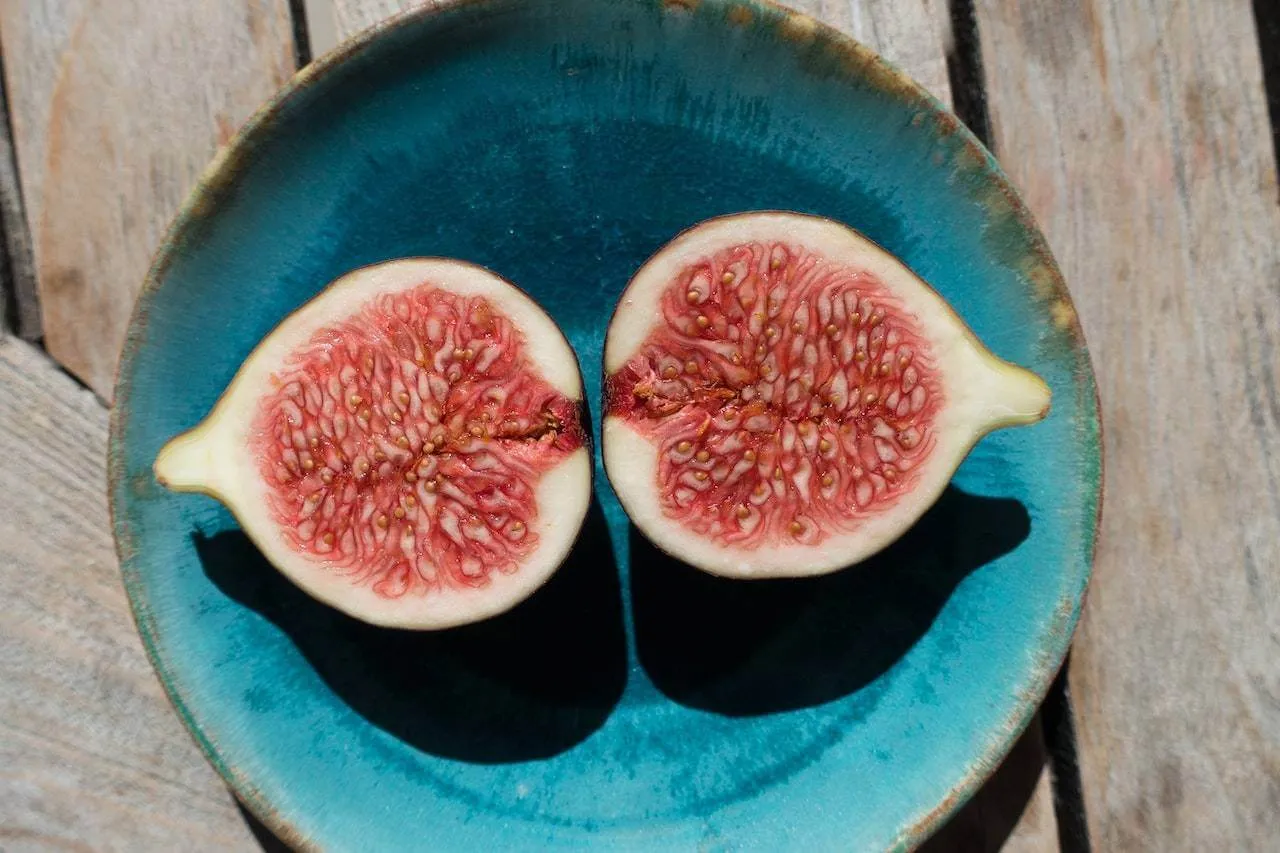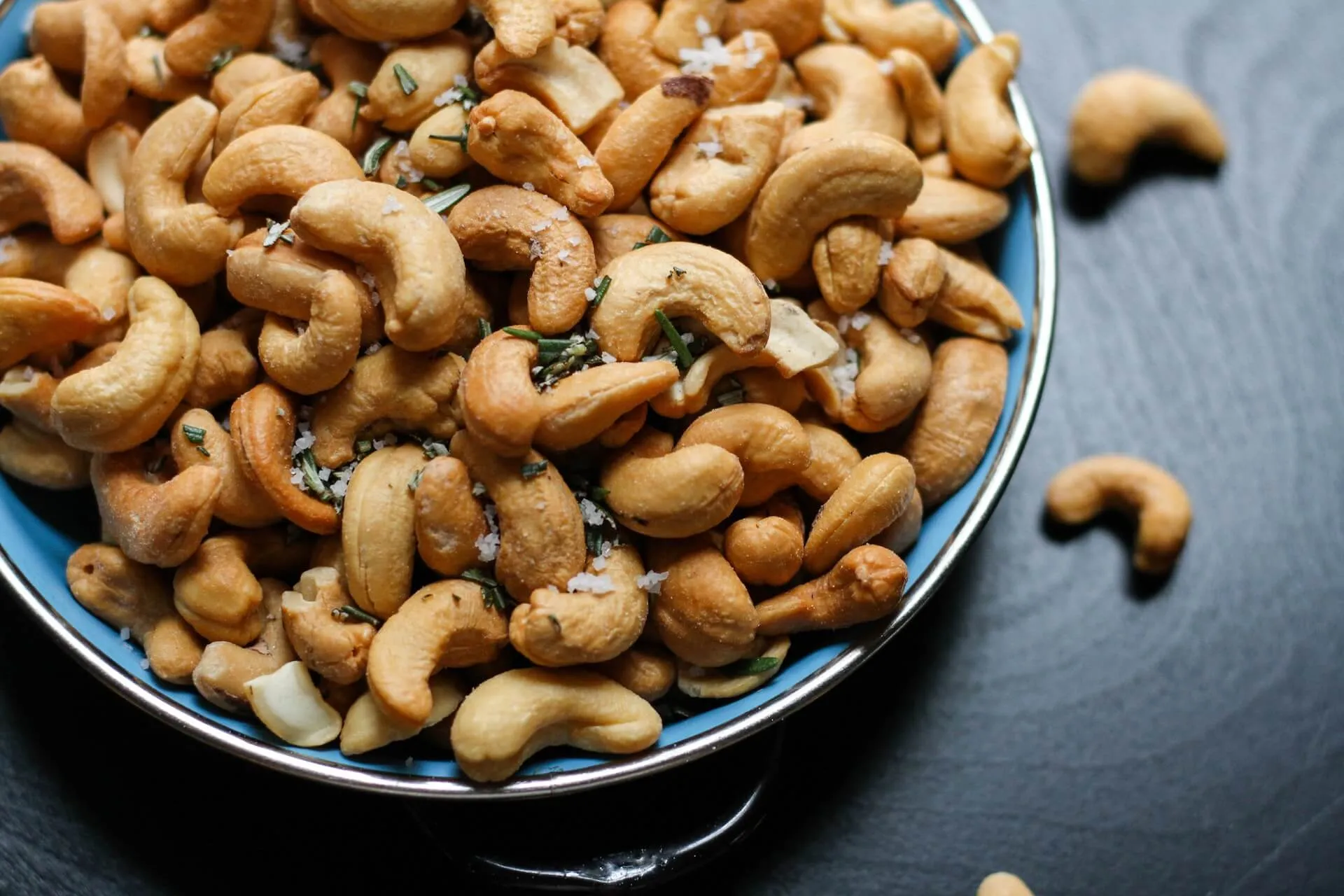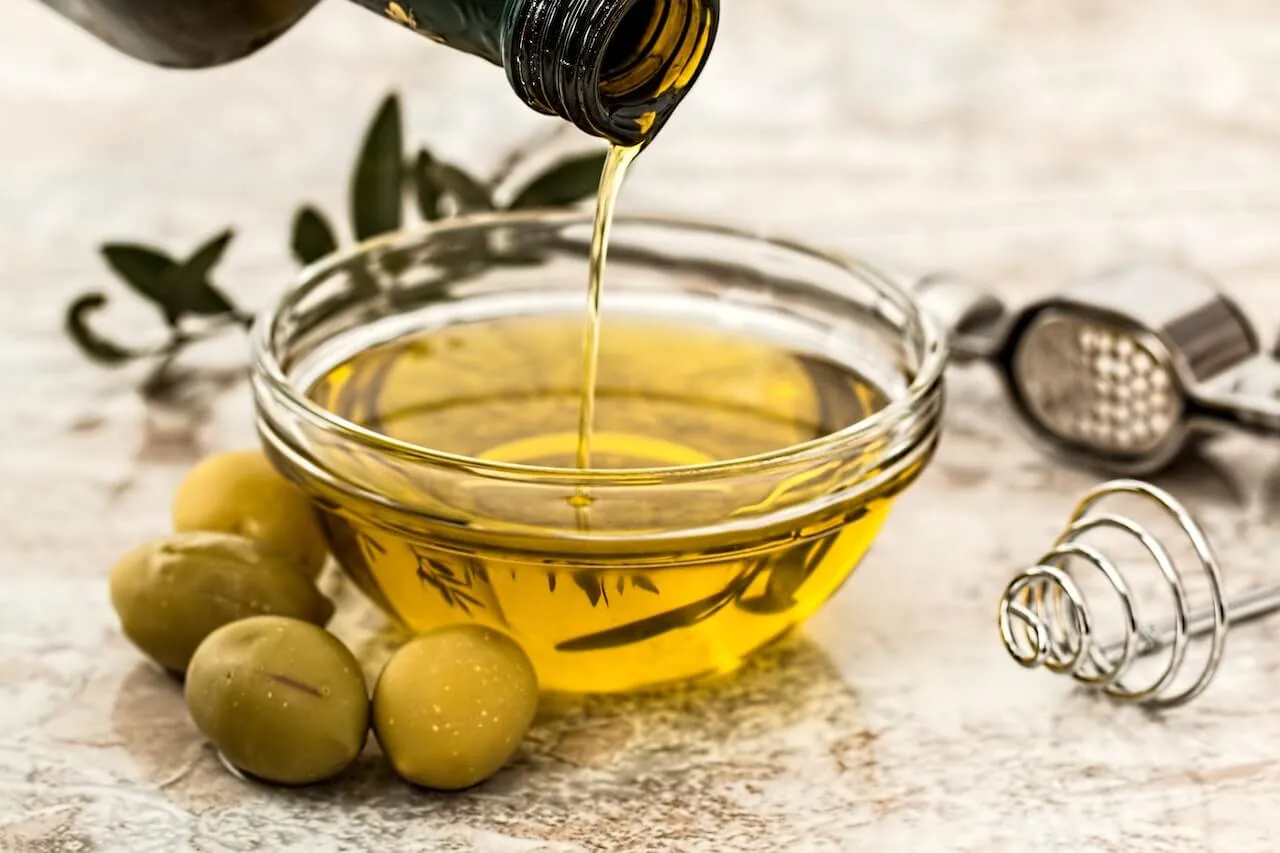In recent years, questions about the healthfulness of mayonnaise have emerged.
Mayo is made primarily from fat and egg yolks. As with any food, consuming large amounts can lead to an imbalanced intake of certain nutrients, fat in this instance.
Additionally, it may be easier to consume mayonnaise now because it is available in any store or restaurant.
Mayonnaise was commercially made in the early 1900s and became popular in the United States around 1920 as a sandwich condiment and when mixing recipes like tuna salad.1 Before that, mayo was homemade for various recipes and meals.
In this article, you will learn about mayonnaise ingredients, its nutritional facts, common types of mayo, health benefits, any downsides, a homemade recipe, and some mayo alternatives.
What is Mayonnaise Made of?
Mayonnaise is traditionally made with oil, vinegar or lemon juice, egg yolk, and spices (usually mustard). Mayonnaise is an oil and water emulsion. Emulsions allow components like oil and water that do not mix to stay mixed and not separate.1
The egg yolk is the emulsifier that keeps the water (vinegar or lemon juice) bound to the oil. The egg yolk is a critical piece and allows for the pleasing texture of the oil and fat emulsion in mayonnaise.1
Many substitute products for the egg have been trialed with success, but there are only so many perfect replacements in terms of taste and ability to keep the mayonnaise from separating. We will discuss some of the alternatives later in this article. A different oil source can be used to change to healthier fat (such as more unsaturated fat).
{{mid-cta}}
Mayonnaise Nutrients
A commercially-made regular mayonnaise available at any local store provides the following nutrients. This mayonnaise uses soybean oil, water, egg yolks, cider vinegar, spices, and lemon juice.2
In one serving of commercial mayonnaise (14 g or one tablespoon):
- 100 calories
- 0 g protein
- 11 g fat
- 1.5 g saturated fat
- 9.5 g unsaturated fat
- 2.5 g monounsaturated fat
- 7 g polyunsaturated fat
- 10 mg cholesterol (3% daily value)
- 0 g carbohydrates
- 0 g fiber
- 0 g sugar
- 85 mg sodium (3% daily value)
Mayonnaise is primarily fat, and soybean oil provides mostly unsaturated fat.2 There is little else in mayonnaise regarding vitamins, minerals, fiber, or sugar. Be aware that some brands add sugar to their mayonnaise. Mayonnaise is considered an added fat or discretionary calorie.3

Types of Mayonnaise
Since mayonnaise is an added fat, choosing one made with a quality oil or fat source can help ensure you consume mostly beneficial fats for your body.
Consuming small amounts of mayonnaise is less of a concern in the big picture of your diet. If you use mayonnaise regularly, choosing some different types could impact your diet and fat intake.
- Traditional Mayonnaise
Traditional mayonnaise is often used as a condiment for sandwiches or a base to mix ingredients for potato salad, tuna or chicken salad, or slaws. Mayonnaise is a creamy, pale yellow spread made with egg yolks, oil, lemon juice or vinegar, and spices.1
- Light or Reduced-Fat Mayonnaise
Light mayonnaise is a lower-calorie version. One tablespoon provides 60 calories and 6 g of fat.4 Due to its lower fat content, light mayonnaise is less creamy. Often, fat replacers like modified food starch4 or whey protein are used.1
- Fat-Free Mayonnaise
Fat-free mayonnaise contains no added fat. This removal of fat reduces a tablespoon serving down to 10 calories and no fat.5 Either minimal egg yolk is used or egg whites.
Fat is substituted with a carbohydrate or protein-based replacement and sometimes more sugar. They do not fully replace the fat function and taste but mimic closely for those needing or wanting to reduce fat intake.1 This means fat-free mayo may feel and taste less creamy.
- Vegan Mayonnaise
Vegan mayonnaise contains no animal products. Those following a vegan diet avoid eggs. Instead, soy milk or aquafaba (the liquid beans are cooked in or liquid in canned beans) is mixed with oil to make mayonnaise.6
- Alternative Oil Mayonnaise
Instead of soybean oil, olive oil or avocado oil is used to make mayonnaise. Sometimes, a mixture of oils is used to achieve a desirable taste. Choosing mayonnaise with a heart-healthy oil like olive or avocado reduces saturated fat content.7
Is Mayonnaise Good for You?
Mayonnaise is an added fat or discretionary calorie per the Dietary Guidelines for Americans.3 But that doesn’t mean added should be considered only unhealthy.
The Dietary Guidelines for Americans (and registered dietitians) recognize that added fat gives flavor, helps transport fat-soluble vitamins to your body, and makes foods enjoyable.3
Mayonnaise (and other added fats in moderation) can be an excellent way to eat more vegetables and incorporate protein options you may not normally consume.
Mayonnaise can be made or purchased with heart-healthy oils. Lower fat versions are available if your health requires limited fat intake. Mayonnaise usually contains more unsaturated fat than saturated fat.
Research on 14,806 adults with heart disease has also shown that moderate egg consumption (eating one egg daily) is not associated with heart disease risk overall.8 There is significantly less than one egg in a tablespoon of mayonnaise.
Mayonnaise Health Benefits
- Positive Impact on Heart Health
Mayonnaise is mostly unsaturated fats (mono- and polyunsaturated fat). Unsaturated fats are healthy fats that provide beneficial effects on our bodies. These fats are less likely to promote insulin resistance, inflammation, and fat storage.9 Eating unsaturated fats (especially polyunsaturated fat) in place of saturated fats reduces your risk of heart disease.10
- Contains Omega-3 Fats
Besides monounsaturated and polyunsaturated fats, other healthy fats include omega-3 fatty acids. Alternative-oil mayonnaise or those enriched with flaxseed oil contain higher omega-3 fatty acids.11
Omega 3 fatty acids reduce cardiovascular disease risk.9 Some healthy fats include olive oil, avocados, avocado oil, flaxseed oil, nuts, and seeds.
- Helps You Eat More Vegetables
Adding heart-healthy fats can increase your vegetable (and other healthy food) intake. If you can’t stand the taste of vegetables by themselves, adding a little fat can enhance the flavor, help you absorb vitamins and minerals, and get you to eat them.
Raw cabbage or slaw flavor is boosted with mayonnaise. A little bit of fat can go a long way in helping you eat more vegetables.
Mayonnaise Health Potential Side Effects
- Calorie Dense
One tablespoon of regular mayonnaise contains 100 calories. Depending on how much you are eating, this condiment could add up along with other calorie-dense foods.
Be mindful of your daily food intake to determine if you unknowingly consume large amounts of calorie-dense foods. A food swap here and there can make a big difference in a week or month and help you achieve your health goals.
- Might Increase Sugar Intake
Light or fat-free versions of mayonnaise sometimes contain added sugar. Some are lower at 1 g of added sugar.4
Many condiments, such as barbeque sauce or ketchup, can contain higher added sugar. Check your condiment labels for your total daily added sugar.
The American Heart Association recommends a limit for women of 100 calories from added sugar (25 g or six teaspoons). The limit is 150 calories from added sugar (36gm or nine teaspoons) for men.12
- Might Increase Fat Intake
Consuming traditional mayonnaise in excess could lead to increased fat intake, including saturated fat, which could impact your heart health. Remember, one tablespoon of regular mayonnaise contains 1.5 g of saturated fat.2
The Dietary Guidelines for Americans recommends limiting saturated fat to less than 10 percent of total calories. This is about 20 to 22 g of saturated fat daily for people consuming 1,800 to 2,000 calories.3

Is Light Mayo Healthy?
Light or reduced-fat mayo can be a healthy substitute for people on a lower-calorie or fat-restricted diet. There are 30 fewer calories per tablespoon, and light mayo often tastes similar to regular mayonnaise for most people.
Remember that when fat is removed, it is replaced with a carbohydrate or protein mimic.1 If you monitor carbohydrates for blood sugar control, you might inadvertently consume more carbohydrates with a light or reduced-fat mayo.
Mayonnaise can be easily found and is dairy-free and gluten-free for individuals with food sensitivities or allergies. It can be an ideal substitute for milk-based condiments.
Check the label for added sugar or carbohydrate changes and allergens like gluten or dairy. Some light versions use a gluten or dairy-containing substitute for fat.
Is Mayonnaise Good for Weight Loss?
Weight loss occurs due to many factors, including increased muscle mass or exercise, a reduction of calories, better sleep routines, and stress management.
No one factor causes someone to lose weight, but a cumulation of small changes that can be maintained long-term. Mayonnaise alone will not cause weight gain or loss.
You can incorporate mayonnaise into your eating plan in moderation, similar to sugar, chocolate, and other added fats. Choosing a reduced or non-fat version may include more mayonnaise without as many calories as traditional mayonnaise.
Incorporating healthy fats with fiber-rich carbohydrates and protein will help stabilize blood sugar levels and prevent cravings for empty-calorie foods.
Choosing healthy fat versions of mayonnaise can help you consume more unsaturated fats and even omega-3 fatty acids for some mayo versions. Try making your mayonnaise to accommodate your oil option and ensure it is allergen-friendly.
Homemade Mayonnaise Recipe13
Ingredients:
One large pasteurized egg yolk, room temperature
½ teaspoon Dijon or yellow mustard (ensure gluten-free)
¼ teaspoon salt
Ground pepper, to taste
¾ cup extra virgin olive oil or avocado oil
One teaspoon vinegar
1 ½ teaspoons lemon juice
Directions:
- Whisk together yolk, mustard, and salt in a tall cup or jar until combined well.
- Using an immersion blender or whisking continuously, begin adding oil.
- Add about ¼ cup of the oil slowly, blending until the mixture thickens.
- Add vinegar and lemon juice and blend to combine.
- Add the remaining ½ cup of oil slowly, blending continuously.
- Whisk in any salt or pepper to taste.
- Keep covered in the refrigerator for up to one week.
Mayonnaise Alternatives
Many mayonnaise recipe alternatives exist if you want to use different oil or egg substitutes. They are relatively simple changes that can modify the fat content type of fats, increase the protein, or accommodate any food allergies or sensitivities. The alternatives still provide the texture and function of traditional mayonnaise.
Greek Yogurt Mayonnaise
This lower-calorie mayonnaise alternative swaps Greek yogurt for the oil.14
Ingredients:
One cup of plain-fat-free Greek yogurt
One tablespoon of vinegar
Two teaspoons of preferred sweetener
Directions:
- Combine Greek yogurt, vinegar, and preferred sweetener with a whisk until thoroughly blended.
- Add optional ingredients for more flavor: 1 teaspoon of salt, ½ teaspoon of paprika, and ½ teaspoon of lemon juice.
- Store covered in the refrigerator for up to one week.
Vegan Mayonnaise
This recipe includes no eggs and uses aquafaba to make mayonnaise.15
Ingredients:
¼ cup aquafaba (the liquid in a can of cooked chickpeas)
¼ teaspoon ground mustard
¼ teaspoon salt
1 ½ teaspoons vinegar
One to three teaspoons of brown rice syrup (or stevia, cane sugar, or maple syrup)
¾ cup to 1 cup oil (sunflower or avocado oil)
Directions:
- Add aquafaba to a tall glass with all the ingredients except the oil. Blend on high with an immersion blender.
- Then, slowly drip the oil into the mixture while blending with an immersion blender on high. Add the oil slowly over 1 to 2 minutes.
- Move the blender up and down to incorporate some air towards the end. If the mayo is too thin, add more oil.
- Taste and adjust seasonings to your preference.
- Use immediately and then transfer to a covered container in the refrigerator. It will thicken more as it cools. Use within two weeks.
Using a CGM with Signos: Real-Time Data, Backed by AI
Signos pairs a real-time glucose biosensor with AI trained on tens of millions of data points to deliver personalized, science-backed guidance for weight management and health. See exactly how your body responds, and take action.
Learn how it works. Ready to get started? Join now.
Topics discussed in this article:
References
- Mirzanajafi-Zanjani, M., Yousefi, M., & Ehsani, A. (2019). Challenges and approaches for production of a healthy and functional mayonnaise sauce. Food science & nutrition, 7(8), 2471–2484. https://doi.org/10.1002/fsn3.1132
- USDA FoodData Central. (2021, October 28). Food Details - Mayonnaise. https://fdc.nal.usda.gov/fdc-app.html#/food-details/2066642/nutrients
- Dietary Guidelines for Americans. (2020, December). Dietary Guidelines for Americans, 2020-2025. https://www.dietaryguidelines.gov/resources/2020-2025-dietary-guidelines-online-materials
- USDA FoodData Central. (2022, December 22). Food Details - Low fat mayonnaise. https://fdc.nal.usda.gov/fdc-app.html#/food-details/2410050/nutrients
- USDA FoodData Central. (2021, March 19). Food Details - Mayo fat free nonfat mayonnaise dressing, mayo. https://fdc.nal.usda.gov/fdc-app.html#/food-details/1609645/nutrients
- Minimalist Baker. (2023, September 5). How to make Aquafaba. https://minimalistbaker.com/a-guide-to-aquafaba/
- USDA FoodData Central. (2023, July 13). Food Details - Olive oil mayonnaise. https://fdc.nal.usda.gov/fdc-app.html#/food-details/2594685/nutrients
- Drouin-Chartier, J. P., Chen, S., Li, Y., Schwab, A. L., Stampfer, M. J., Sacks, F. M., Rosner, B., Willett, W. C., Hu, F. B., & Bhupathiraju, S. N. (2020). Egg consumption and risk of cardiovascular disease: three large prospective US cohort studies, systematic review, and updated meta-analysis. BMJ (Clinical research ed.), 368, m513. https://doi.org/10.1136/bmj.m513
- DiNicolantonio, J. J., & O'Keefe, J. H. (2017). Good Fats versus Bad Fats: A Comparison of Fatty Acids in the Promotion of Insulin Resistance, Inflammation, and Obesity. Missouri medicine, 114(4), 303–307.
- Mozaffarian, D., Micha, R., & Wallace, S. (2010). Effects on coronary heart disease of increasing polyunsaturated fat in place of saturated fat: a systematic review and meta-analysis of randomized controlled trials. PLoS medicine, 7(3), e1000252. https://doi.org/10.1371/journal.pmed.1000252
- El-Waseif, M., Saed, B., Fahmy, H., Sabry, A., Shaaban, H., Abdelgawad, M., Amin, A., & Farouk, A. (2022). Mayonnaise Enriched with Flaxseed Oil: Omega-3 Fatty Acids Content, Sensory Quality and Stability during the Storage. Foods (Basel, Switzerland), 11(15), 2288. https://doi.org/10.3390/foods11152288
- American Heart Association. (2021, November 2). Added Sugars. https://www.heart.org/en/healthy-living/healthy-eating/eat-smart/sugar/added-sugars
- Rachel Pauls Food. (2022, August 11). Easy Low-FODMAP mayonnaise recipe; gluten-free, dairy-free. https://www.rachelpaulsfood.com/easy-low-fodmap-mayonnaise-recipe-gluten-free-dairy-free/
- Journey to Fitness. (2016, August 29). Greek yogurt mayonnaise. https://journ2fitness.wordpress.com/2016/08/29/greek-yogurt-mayonnaise/
- Minimalist Baker. (2023, March 28). Easy vegan aquafaba mayo. https://minimalistbaker.com/easy-vegan-mayo-with-aquafaba/




.svg)







.webp)


.svg)
.svg)
.svg)
.svg)
.svg)
.svg)
.svg)
